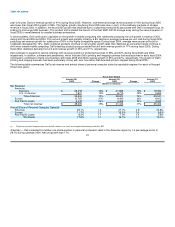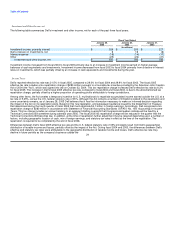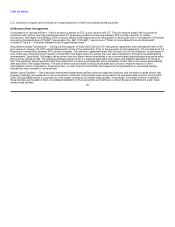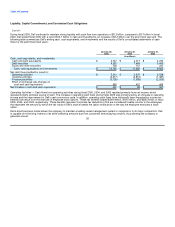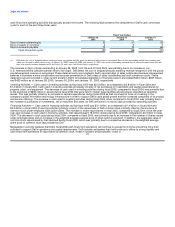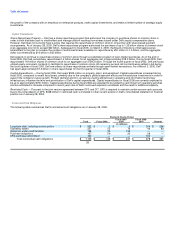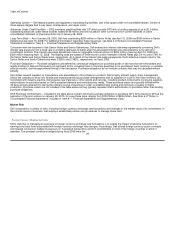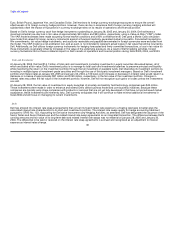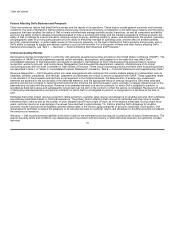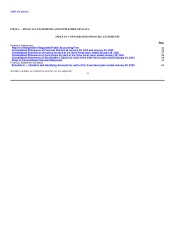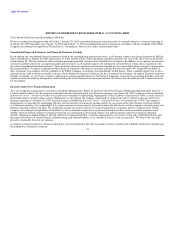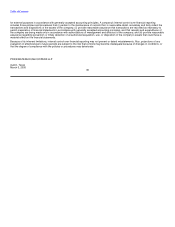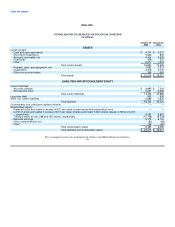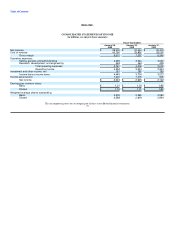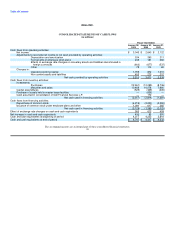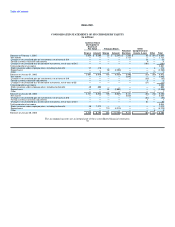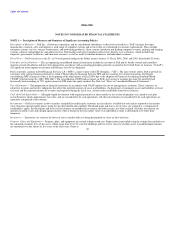Dell 2004 Annual Report Download - page 34
Download and view the complete annual report
Please find page 34 of the 2004 Dell annual report below. You can navigate through the pages in the report by either clicking on the pages listed below, or by using the keyword search tool below to find specific information within the annual report.
Table of Contents
Factors Affecting Dell's Business and Prospects
There are numerous factors that affect Dell's business and the results of its operations. These factors include general economic and business
conditions; the level of demand for Dell's products and services; the level and intensity of competition in the technology industry and the pricing
pressures that have resulted; the ability of Dell to timely and effectively manage periodic product transitions, as well as component availability
and cost; the ability of Dell to develop new products based on new or evolving technology and the market's acceptance of those products; the
ability of Dell to manage its inventory levels to minimize excess inventory, declining inventory values, and obsolescence; the product, customer,
and geographic sales mix of any particular period; Dell's ability to effectively manage its operating costs; and the effect of armed hostilities,
terrorism, natural disasters, or public health issues on the economy generally, on the level of demand for Dell's products and services, and on
Dell's ability to manage its supply and delivery logistics in such an environment. For a discussion of these and other factors affecting Dell's
business and prospects, see "Item 1 — Business — Factors Affecting Dell's Business and Prospects."
Critical Accounting Policies
Dell prepares its financial statements in conformity with generally accepted accounting principles in the United States of America ("GAAP"). The
preparation of GAAP financial statements requires certain estimates, assumptions, and judgments to be made that may affect Dell's
consolidated statement of financial position and results of operations. Dell believes its most critical accounting policies relate to revenue
recognition, warranty accruals, and income taxes. Management has discussed the development, selection, and disclosure of its critical
accounting policies with the Audit Committee of Dell's Board of Directors. These critical accounting policies and Dell's other accounting policies
are described in Note 1 of "Notes to Consolidated Financial Statements" included in "Item 8 — Financial Statements and Supplementary Data."
Revenue Recognition — Dell frequently enters into sales arrangements with customers that contain multiple elements or deliverables such as
hardware, software, peripherals, and services. Judgments and estimates are critical to ensure compliance with GAAP. These judgments relate
to the allocation of the proceeds received from an arrangement to the multiple elements, the determination of whether any undelivered
elements are essential to the functionality of the delivered elements, and the appropriate timing of revenue recognition. Dell offers extended
warranty and service contracts to customers that extend and/or enhance the technical support, parts, and labor coverage offered as part of the
base warranty included with the product. Revenue from extended warranty and service contracts, for which Dell is obligated to perform, is
recorded as deferred revenue and subsequently recognized over the term of the contract or when the service is completed. Revenue from sales
of third-party extended warranty and service contracts, for which Dell is not obligated to perform, is recognized on a net basis at the time of
sale.
Estimates that further impact revenue recognition relate primarily to customer sales returns and allowance for doubtful accounts. Both estimates
are relatively predictable based on historical experience. The primary factors affecting Dell's accrual for estimated customer returns include
estimated return rates as well as the number of units shipped that still have a right of return as of the balance sheet date. During recent fiscal
years, customer returns as a percentage of revenues have declined to approximately 1%. Factors affecting Dell's allowance for doubtful
accounts include historical and anticipated customer default rates of the various aging categories of accounts receivable. Each quarter, Dell
reevaluates its estimates to assess the adequacy of its recorded accruals for customer returns and allowance for doubtful accounts and adjusts
the amounts as necessary.
Warranty — Dell records warranty liabilities at the time of sale for the estimated costs that may be incurred under its basic limited warranty. The
specific warranty terms and conditions vary depending upon the product sold and country in which Dell does business, but generally includes
technical 31


